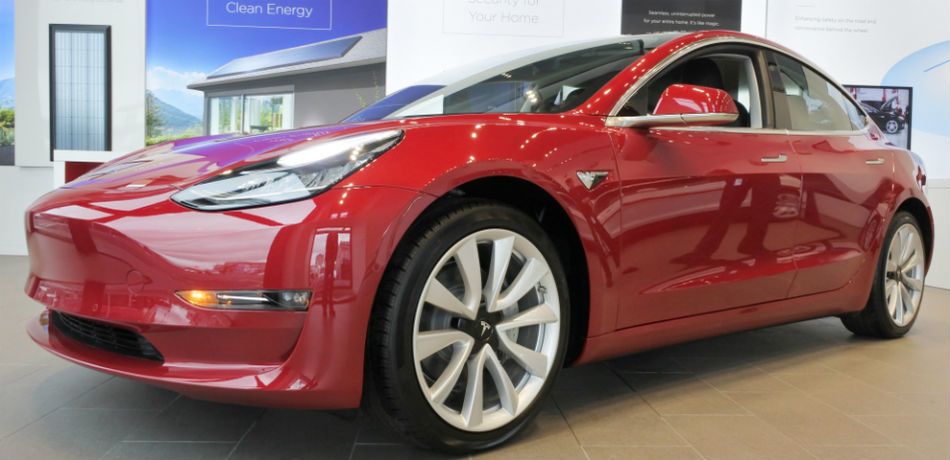When I’m wrong, I’m wrong. Last month, I estimated based on the Tesla Model 3’s Q3 production rates that the 100,000th Model 3 would roll out of the Fremont factory by the end of the month. Well, I was off by a couple of weeks. The milestone Model 3 was actually produced on October 13. I can take comfort in the fact that the 100,000th Model 3 was actually produced a few days before that date, but you’d have to include engineering cars and release candidates. Either way, I’m not too ashamed of my estimate being off.
Why is the 100,000 mark significant?
It took years of sustained effort for Tesla to produce 100,000 Model 3 electric cars, and I believe this is the result of bravado, sweat and overtime. Now, the company is averaging 5,000 Model 3s a week in a sustained manner. Their own timeline is off by at least a couple of months, but this is not a big deal. No, producing 100,000 relatively affordable electric vehicles – that’s the big deal.
This is the first part of Phase 1 completed. The second half has just started, and it will culminate in the production of the very first $35,000 Model 3. How long will that take? According to several analysts who have tried to estimate a timeline for this over the past months, May 2018 is when we could see the first base Model 3 being sold.
What Tesla Must Do to Make a $35,000 Model 3
That date is more than two fiscal quarters into the future, so what does Tesla need to achieve during that time in order to be able to create a sustainable $35,000 Model 3 business? Several things, actually.
First of all, production needs to hit 10,000 cars a week – just for Model 3 alone. We tend to forget that Tesla also produces two other blockbusters in the Model S and Model X (and several variants thereof), but the Model 3 is undeniably the star of the show. It is the car that will take the company to the next stage – global penetration.
Second, once production reaches that level, Tesla needs to sustain it for several weeks, consecutively. Why? Because, by then, pressure will be mounting for Model 3 deliveries in countries outside North America. The Chinese, the Europeans, the Australians…everybody is already clamoring for the Model 3 since they had their own showcases over the past couple of months. The 10,000-a-week level will give them enough economies of scale to be profitable at $35,000, but it will also give them the capacity to sell in new markets. And, since Model 3 is going to be their best-seller for the foreseeable future, it’s important that they achieve that capability of producing at least half a million Model 3s a year.
Third, they will need to keep Model S and Model X production/sales at the 100,000 a year level. The premium pricing on these cars will give them leverage to down-price the Model 3 in order to achieve optimal order volume once their reservations are fulfilled. That will happen within 6 to 9 months of Tesla sustainably producing 10,000 Model 3s a week.
The Current Situation at Tesla, Inc.
As of now, Tesla is at the halfway point to achieving that. Once reservations are fulfilled, it’s new markets that will help the company scale to the next level above that. The potential market for the Model 3 will expand as the price drops, so we won’t be surprised if you see a $25,000 Model 3 being sold three years from now. That’s the only way Tesla can achieve maximum penetration in an ICE-dominated automobile industry.
Mind you, the $25,000 car might not even be the Model 3, but it is very likely to be. The reason is that the Model 3 has already reached a point where production costs will keep coming down as the sales numbers go up and battery costs come down. That’s a tremendous amount of leverage right there if you think about it.
So, that’s where I think Tesla stands right now: poised on the threshold of scale, with a clear path to sustainable production and global sales growth well into the next decade.
Meanwhile, legacy automakers are still struggling with their baby-step EVs. To be fair, their legacy reputations are weighing down on them – a challenge that Tesla has never had to face. Brands like BMW, Audi, Porsche, Daimler, Jaguar and others can’t ‘experiment’, and the ‘innovator’ tag is firmly with Tesla at the moment. Their only choice is to tread softly and slowly transition from ICE to EV without violating the expectations of a huge customer base that demands certain performance and brand standards.
That, in itself, has given Tesla a massive head start, and it’s something that Musk is sure to exploit in order to establish the Tesla brand in as many markets and market segments as possible over the next five to ten years.



